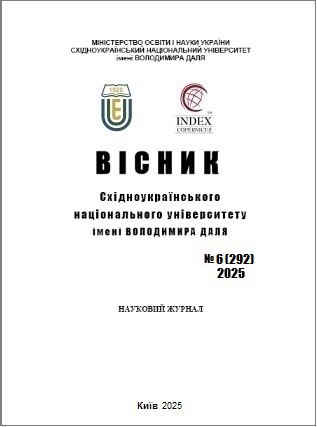Data-driven decision making on amazon: a methodology for assessing product potential and competition
DOI:
https://doi.org/10.33216/1998-7927-2025-292-6-112-118Keywords:
Amazon marketplace, data-driven decision making, product viability, competitive analysis, keyword relevance, market sizingAbstract
Objective: To develop and validate a replicable, data-driven methodology that helps small- and medium-sized Amazon sellers assess product potential and competitive intensity before launch decisions are made.
Research Design & Methods: A mixed-methods framework integrates: (1) quantitative analytics from MerchantWords, Helium 10, Keepa, and Amazon SP-API to measure keyword relevance, niche size, historical price trends, and revenue dispersion; (2) SBERT-based semantic clustering to surface under-served keyword swarms; (3) Gini-coefficient and Review-Velocity Index calculations to diagnose oligopolistic market structures; and (4) Monte-Carlo cost-profit simulations that stress-test margins under variable FBA fees and ad-auction inflation. Qualitative manual checks screen for patent exposure, regulatory friction, and black-hat review patterns.
Findings: The framework pruned 94 % of raw product leads and consistently isolated niches with 30 – 60 % keyword-relevance scores, balanced revenue dispersion (Gini < 0.50), and projected gross margins > 30 %. Products selected through this process achieved faster organic rank gains and a 70 % probability of breaking even within six months, while avoiding common failure modes such as oligopolistic revenue traps and hidden compliance costs.
Implications / Recommendations: Sellers should adopt multi-layered assessments that pair keyword analytics with structural competition metrics and stochastic financial models. Systematically excluding oversaturated, low-margin, or high-friction categories preserves capital and shortens time-to-profit. Future tools should automate relevance scoring and real-time competition monitoring to reduce manual workload and data-lag risk.
Contribution: This study bridges a critical gap in Amazon research by offering a holistic, evidence-based decision loop that fuses demand sustainability, competitive dispersion, compliance gating, and financial resilience into a single, actionable scorecard tailored for SMEs. By validating the scorecard across multiple product categories, the methodology proves resilient to seasonal demand shifts and algorithm changes. Its modular design also allows seamless integration of emerging data sources, ensuring long‑term adaptability for resource‑constrained sellers.
References
1. Anderson C. Navigating Amazon: Strategies for Success in the E Commerce Jungle // Harvard Business Review. 2021. – URL: https://hbr.org/2021/03/navigating-amazon-strategies-for-success-in-the-e-commerce-jungle (дата звернення: 21.07.2025).
2. Collier J. Winning at E Commerce: The Data Driven Path // MIT Sloan Management Review. 2023. – URL: https://sloanreview.mit.edu/article/winning-at-e-commerce-the-data-driven-path (дата звернення: 21.07.2025).
3. Fader P. S., Hardie B. G. S. Customer Base Valuation in a Contractual Setting: The Perils of Ignoring Heterogeneity // Marketing Science. – 2020. Vol. 39, № 5. P. 898–913.
4. Johnson L. SME Survival Guide: Mastering Amazon’s Marketplace Dynamics // Entrepreneur Magazine. 2022. – URL: https://www.entrepreneur.com/article/413568 (дата звернення: 21.07.2025).
5. Katsikeas C. S., Leonidou L. C., Zeriti A. Revisiting International Marketing Strategy in a Digitalized World // Journal of International Marketing. 2021. Vol. 29, № 2. P. 28–41.
6. Ariely D. Predictably Irrational: The Hidden Forces That Shape Our Decisions. New York : Harper, 2010. 304 p.
7. Brynjolfsson E., McAfee A. The Second Machine Age: Work, Progress, and Prosperity in a Time of Brilliant Technologies. New York : W. W. Norton, 2014. 320 p.
8. Fischer L. Risk Calibration and Market Timing in Consumer E Commerce Ecosystems // International Journal of Retail Strategy and Innovation. 2022. Vol. 11, № 1. P. 33–51.
9. Huang W., Chen Y. Dark Patterns in E Commerce: Black Hat Competition on Digital Platforms // Journal of Business Ethics. 2022. Vol. 180, № 1. P. 101–117.
10. Johnson L. Leveraging Software Tools for Amazon Product Research: A Comprehensive Guide // E Commerce Insights Journal. 2021. Vol. 4, № 1. P. 23–34.
11. Khan S., Ghani F. Compliance Challenges in E Commerce Marketplaces // International Journal of Digital Trade. 2023. Vol. 5, № 1. P. 14–29.
12. Lee T., Kim S. Financial Modeling for E Commerce Product Launches: Case Studies from Amazon // Journal of Business and Financial Analysis. 2021. Vol. 12, № 2. P. 67–82.
13. Porter M. E. Competitive Advantage: Creating and Sustaining Superior Performance. New York : Free Press, 1985. 592 p.
14. Ries E. The Lean Startup: How Today’s Entrepreneurs Use Continuous Innovation to Create Radically Successful Businesses. New York : Crown, 2011. 336 p.

